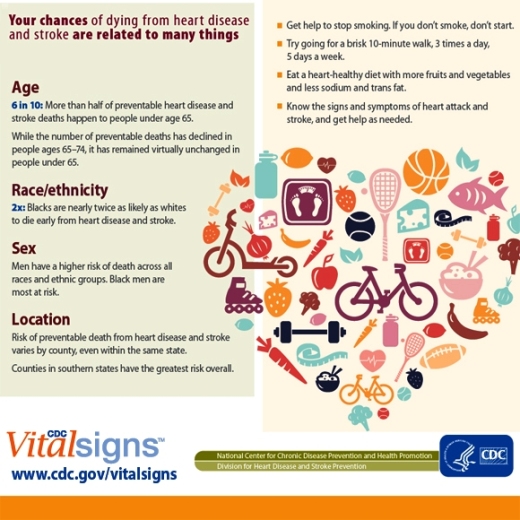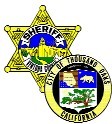CDC Reports Over 200,000 Preventable Heart Disease and Stroke Deaths Annually
/
More than 200,000 preventable deaths from heart disease and stroke occurred in the United States in 2010, according to the Centers for Disease Control and Prevention. More than half of these deaths happened to people younger than 65 years of age, and the overall rate of preventable deaths from heart disease and stroke dropped nearly 30 percent between 2001 and 2010, with the declines varying by age. Lack of access to preventive screenings and early treatment for high blood pressure and high cholesterol could explain the differences among age groups.
- Age: Death rates in 2010 were highest among adults aged 65-74 years (401.5 per 100,000 population). But preventable deaths have declined faster in those aged 65–74 years compared to those under age 65.
- Race/ethnicity: Blacks are twice as likely—and Hispanics are slightly less likely—as whites to die from preventable heart disease and stroke.
- Sex: Avoidable deaths from heart disease, stroke and high blood pressure were higher among males (83.7 per 100,000) than females (39.6 per 100,000). Black men have the highest risk. Hispanic men are twice as likely as Hispanic women to die from preventable heart disease and stroke.
- Location: By state, avoidable deaths from cardiovascular disease ranged from a rate of 36.3 deaths per 100,000 population in Minnesota to 99.6 deaths per 100,000 in the District of Columbia. By county, the highest avoidable death rates in 2010 were concentrated primarily in the southern Appalachian region and much of Tennessee, Arkansas, Mississippi, Louisiana, and Oklahoma. The lowest rates were in the West, Midwest, and Northeast regions.
To save more lives from these preventable deaths, doctors, nurses, and other health care providers can encourage healthy habits at every patient visit, including not smoking, increasing physical activity, eating a healthy diet, maintaining a healthy weight, and taking medicines as directed.
Learn more about CDC’s heart disease, stroke, and high blood pressure initiatives, and the national Million Hearts initiative.









